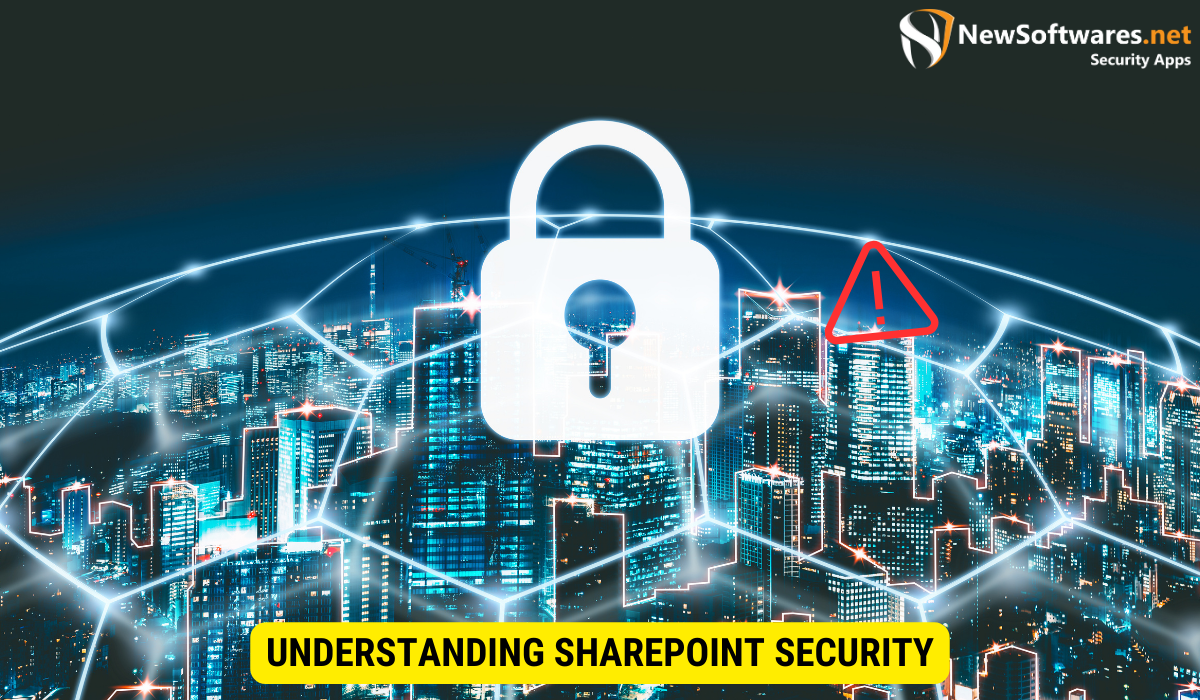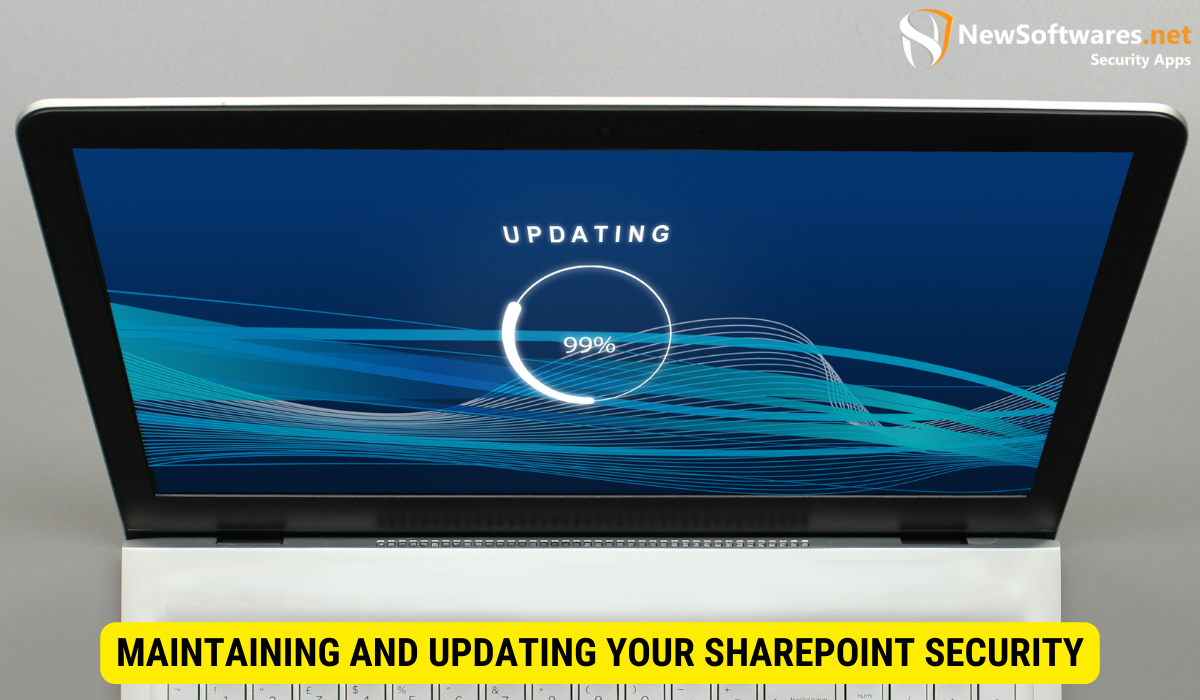Data encryption at rest is crucial for ensuring the security of your SharePoint data. It adds an extra layer of protection, making data unreadable and unusable without the appropriate decryption keys.
In today’s digital age, data security is of utmost importance. With the rising reliance on cloud-based platforms like SharePoint for data storage and collaboration, organizations must prioritize protecting their sensitive information. One crucial aspect of SharePoint security is data encryption at rest. Together, we will delve into the significance of data encryption, explore key concepts in SharePoint security, discuss the role of encryption in data security, evaluate current SharePoint security measures, outline steps to implement encryption in SharePoint and highlight the importance of maintaining and updating security measures.
Understanding SharePoint Security

SharePoint is a powerful platform that facilitates efficient teamwork and document management. It provides organizations with a central location for storing, organizing, and sharing information. However, its wide array of features and capabilities also brings important security considerations that need to be understood and addressed. Understanding SharePoint security is key to safeguarding your organization’s valuable data and protecting it from unauthorized access.
Regarding SharePoint security, one of the most crucial aspects is data encryption. Data encryption involves encoding data to only be accessed or read by authorized individuals or systems. By encrypting data, organizations add a layer of protection against unauthorized access. Even if data falls into the wrong hands, it remains unreadable and unusable without the proper decryption keys.
The Importance of Data Encryption
Data encryption plays a vital role in SharePoint security for several reasons. Primarily, it helps protect sensitive information from being accessed by unauthorized individuals. Data breaches & cyber attacks are becoming increasingly common in today’s digital age, making data encryption an essential safeguard.
Furthermore, data encryption helps organizations comply with industry regulations and protection laws. Many regulatory frameworks, for example the General Data Protection Regulation (GDPR), require organizations to implement adequate security measures to guard personal and sensitive data. Encryption is often considered one of the most effective methods of achieving compliance.
Implementing data encryption in SharePoint involves using encryption algorithms to convert plain text data into ciphertext. This ciphertext can only be decrypted and accessed by authorized users with the encryption keys. By encrypting data at rest and in transit, organizations can ensure their information remains secure throughout its lifecycle.
Key Concepts in SharePoint Security
Before diving into data encryption, one must grasp key concepts in SharePoint security. These concepts include authentication, authorization, and auditing.
Authentication is the process of verifying the identity of users accessing SharePoint. It ensures that users are who they claim to be and prevents unauthorized individuals from accessing sensitive information. SharePoint supports various authentication methods, including Windows, forms-based, and multi-factor authentication.
Authorization, on the other hand, controls access permissions within SharePoint. It determines what actions users can perform and what information they can access. Organizations can enforce granular access controls by implementing proper authorization mechanisms, ensuring that only authorized individuals can view, edit, or delete specific documents or data.
Auditing is another critical aspect of SharePoint security. It allows organizations to monitor and track user activities within SharePoint. By enabling auditing, organizations can record who accessed what information, when they accessed it, and what actions they performed. This information is invaluable in detecting and investigating suspicious or unauthorized activities and ensuring compliance with internal policies and regulatory requirements.
In conclusion, understanding SharePoint security is essential for organizations relying on this powerful collaboration and document management platform. By implementing tough security measures, such as data encryption, authentication, authorization, and auditing, organizations can protect their valuable data from unauthorized access and ensure compliance with industry regulations. SharePoint security should be a top priority for any organization looking to leverage the platform’s capabilities while maintaining the secrecy, integrity, and availability of its information.
The Role of Encryption in Data Security
Data encryption plays a fundamental role in maintaining the safety of your SharePoint environment. It helps protect information from unauthorized access, ensuring confidentiality and integrity. Encrypting data at rest prevents potential data breaches, safeguarding against information theft and misuse.
What is Data Encryption at Rest?
Data encryption at rest refers to encrypting data stored in the SharePoint database or file system. When data is at rest, it is not actively accessed or modified, making it vulnerable to compromise. Encrypting data at rest ensures that even if someone gains illegal access to the underlying storage, they cannot decipher the encrypted data.
How Encryption Protects Your SharePoint Data?
Encryption protects your SharePoint data by rendering it unreadable and unusable without the appropriate encryption keys. Even if an attacker someway gains access to the encrypted data, they cannot understand its contents without the decryption keys. This adds an extra layer of safety providing calmness of mind and ensuring compliance with data protection regulations.
Evaluating Your Current SharePoint Security
Before implementing data encryption, evaluating your organization’s current SharePoint security measures is crucial. This assessment helps identify potential vulnerabilities and determine the appropriate encryption requirements for your environment.
Identifying Potential Vulnerabilities
Assessing your SharePoint environment allows you to identify potential vulnerabilities that could put your data at risk. Conduct a thorough review of user permissions, external sharing settings, and access controls. This evaluation will help you understand any gaps or weaknesses in your current security setup.
Assessing Your Encryption Needs
Understanding your encryption needs is vital to ensure appropriate security measures are in place. Consider the sensitivity of the data stored in SharePoint, industry regulations, and compliance requirements. By assessing your encryption needs, you can determine whether additional encryption measures are necessary and how to implement them effectively.
Implementing Encryption in SharePoint
Once you have evaluated your current security and identified your encryption needs, it’s time to implement encryption in SharePoint. A systematic approach will help you ensure your data is well protected.
Steps to Encrypt Your SharePoint Data
Encrypting your SharePoint data involves several steps, including:
- Identify the sensitive data that requires encryption.
- Choose the appropriate encryption algorithm and key management strategy.
- Configure SharePoint encryption settings and options.
- Encrypt the identified data using the chosen encryption method.
- Regularly review & update your encryption strategy to adapt to evolving threats.
Choosing the Right Encryption Tools
Choosing the right encryption tools is crucial for successful implementation. SharePoint offers built-in encryption features, but additional third-party encryption tools may be necessary depending on your requirements. Select encryption tools that are reliable, compatible with your SharePoint version, and provide robust encryption capabilities.
Maintaining and Updating Your SharePoint Security

Data security is an ongoing process and it is essential to regularly sustain and update your SharePoint security measures.
Regular Security Audits and Updates
Perform regular security audits to evaluate the efficiency of your encryption and other security measures. Stay informed about the newest security trends and best practices to ensure your SharePoint environment remains secure. Additionally, apply updates and patches promptly to address any security vulnerabilities.
Staying Informed About Security Trends
Data security is constantly evolving, with new threats emerging regularly. Stay informed about the most recent security trends, industry standards, and best practices to ensure your SharePoint security measures are current. Regularly educating yourself and your team on security alertness will help you stay one step ahead of potential attackers.
Key Takeaways
- Data encryption at rest is crucial for ensuring the security of your SharePoint data.
- Understanding key concepts in SharePoint security, such as authentication, authorization, and auditing, is vital.
- Evaluating your current SharePoint security helps identify vulnerabilities and determine encryption requirements.
- Implementing encryption involves steps like identifying sensitive data, choosing the right encryption tools, and configuring SharePoint settings.
- Maintaining and updating your SharePoint security measures is crucial to stay protected.
Frequently Asked Questions
What is data encryption at rest?
Data encryption at rest refers to encrypting data stored in the SharePoint database or file system. It adds one more layer of security, making sure that even if the data falls into the wrong hands, it remains unreadable & unusable.
How does data encryption protect my SharePoint data?
Data encryption protects your SharePoint data by rendering it unreadable and unusable without the appropriate encryption keys. Even if an attacker gains access to the encrypted data, they cannot understand its contents without the decryption keys.
How do I evaluate my current SharePoint security?
Evaluating your current SharePoint security involves thoroughly reviewing user permissions, external sharing settings, and access controls. This assessment helps identify potential vulnerabilities and determine the appropriate encryption requirements for your environment.
What are the steps to encrypt SharePoint data?
The steps to encrypt SharePoint data include identifying sensitive data, choosing the appropriate encryption algorithm and key management strategy, configuring SharePoint encryption settings, encrypting the identified data, and regularly reviewing and updating your encryption strategy.
Why is maintaining and updating SharePoint security important?
Maintaining and updating SharePoint security measures is crucial to adapt to evolving threats and address security vulnerabilities. Regular security audits staying informed about the latest security trends, and applying updates help ensure that your SharePoint environment remains secure.
Conclusion
Data security is an continuing concern for organizations, and SharePoint plays a critical role in collaboration and data management. Ensuring that your data is encrypted at rest adds an additional layer of protection, safeguarding against unauthorized access. Evaluate your current SharePoint security measures, implement encryption where necessary, and regularly maintain and update your security to stay one step ahead of potential threats. By prioritizing data encryption, you can have peace of mind knowing that your SharePoint data is secure.
